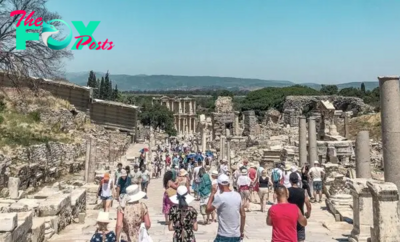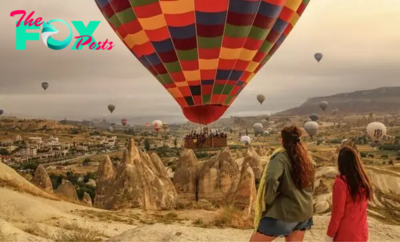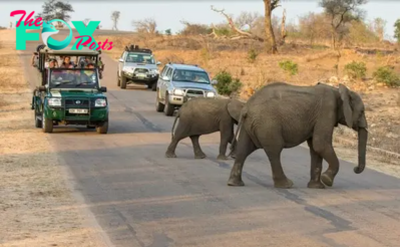Travel
How to Hike Acatenango to See Volcan de Fuego in Guatemala
Steeped in breathtaking natural beauty, Guatemala has a lengthy list of incredible outdoor activities, but there’s one that it’s particularly famed for. For many, myself included, the renowned overnight hike up Acatenango, a stratovolcano in the south of the country, is a once-in-a-lifetime Travel experience.
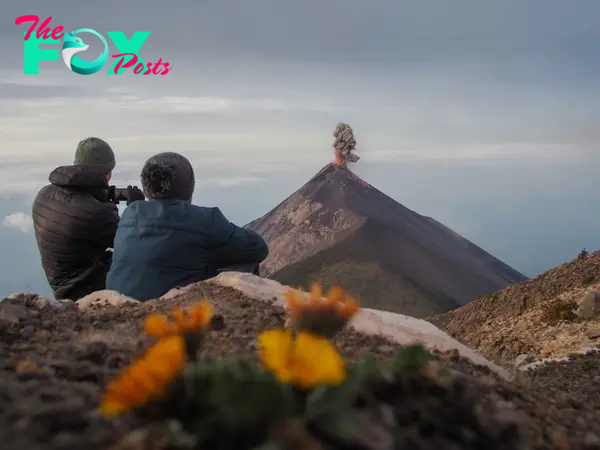
This isn’t your average trek. The ascent up Acatenango has become popular because of the astonishing view you’re rewarded with at the top, which is that of its highly active neighbour, Volcan de Fuego, frequently erupting. As you can imagine, few places on the planet can offer such a unique vantage point for persistent explosions of gas and ash.
Whether you’re an enthusiastic hiker or have a moderate level of fitness, this is one bucket list activity you won’t want to miss. After completing this hike just a few months back, I’ve compiled everything you need to know to start planning your visit into this practical guide.
What Is the Acatenango Hike?
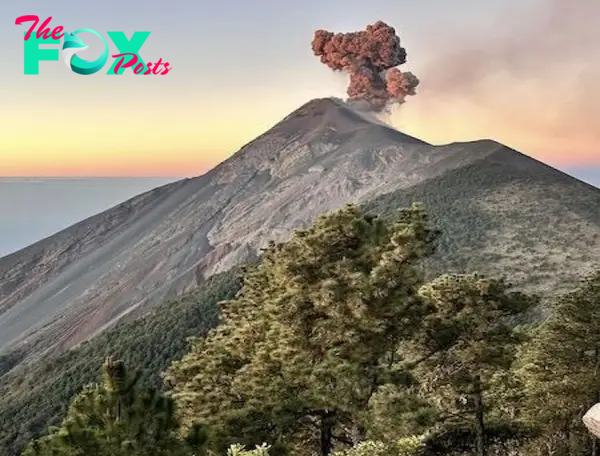
At first, the Acatenango hike can sound a little confusing. Essentially, you’ll trek up one volcano to catch a glimpse of its adjacent counterpart erupting!
While it’s possible to complete the hike in one day by starting early in the morning and making your way back down before dark, the overnight experience is the most sought-after option. I chose the latter for several reasons.
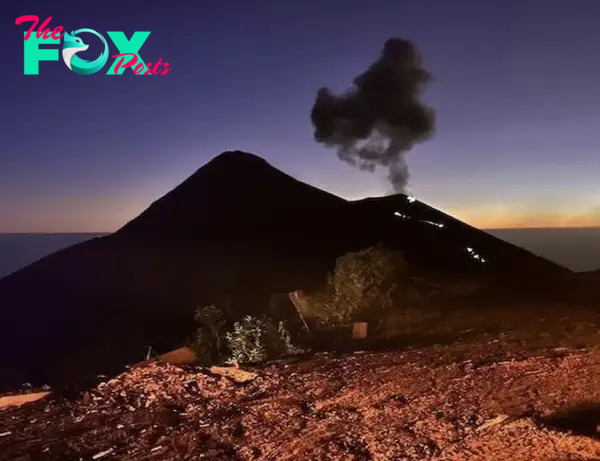
Firstly, the hike itself is quite strenuous and tiring. Getting to the campsite alone requires around five hours of uphill walking, with another 90 minutes to go to reach the summit. The prospect of making this journey and returning to the foot of the volcano in one day sounded exhausting, but it also meant that I’d miss out on seeing Volcano de Fuego erupt after dark.
For these reasons, I decided to book the overnight option, which meant that I could admire Fuego all evening from the comfort of the campsite.
It’s worth keeping in mind that even though Guatemala has a tropical climate, tours to Acatenango run all year round. While November to April are typically the drier months of the year, you can make the journey outside of these times, provided the conditions are still safe.
During the wet season, the rain doesn’t tend to come until the afternoon, by which time you’ll be close to the campsite.
PRO TIP: There’s no guarantee that the weather will be on your side during the dry season and unfavourable during the wetter months, so don’t let timing deter you from visiting.
How Do I Get to Acatenango?
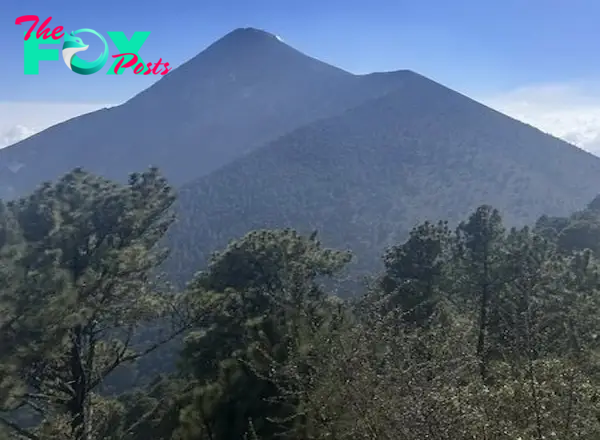
The colonial city of Antigua serves as a gateway to Acatenango, where I started my adventure. Antigua is around a one-hour drive from the trailhead, which begins in the small town of La Soledad.
As it’s among the most visited destinations in Guatemala, getting to Antigua is pretty straightforward. I made my way there from Lake Atitlan, which is roughly a three-hour journey by shuttle. Numerous buses and shuttles depart from the various towns around the lake each day, and there are a ton of tour operators where you can purchase your ticket.
If you arrive by flight, you’ll likely land at La Aurora International Airport in Guatemala City. Antigua is a little over an hour from here (depending on the traffic, of course), and you’ll have the option of getting a taxi or shuttle.
It’s best to give yourself a day or two in Antigua before embarking on the hike, particularly if you’ve taken a long flight. You’ll want to be well-rested before making the climb up.
On the day of the hike, you’ll meet your group and set off for the trailhead quite early. My group had a 6.30 a.m. meeting time and an 8.00 a.m. departure, so I made sure I got plenty of shut-eye the night before.
PRO TIP: It’s recommended that you spend at least 48 hours in an area of high elevation, like Antigua, to allow yourself to acclimatise beforehand.
Picking a Tour Company
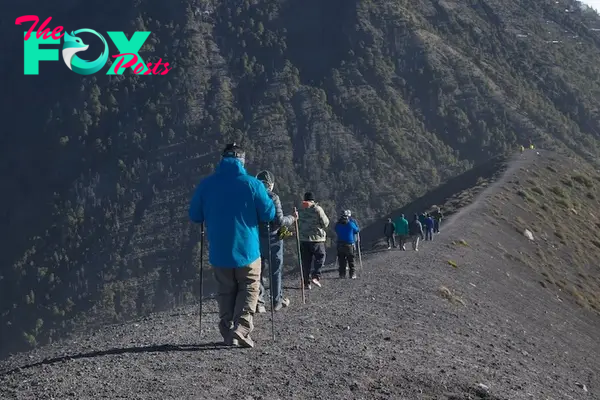
I was taken aback by the sheer volume of tour companies in Antigua offering this expedition. A friend had recommended OX Expeditions, which made my decision-making process that bit easier, as there were over two dozen operators running tours.
The overnight package I booked cost 770 Quetzales (€91) and included our guides, lodging at the camp, warm clothing, four meals, transport to and from the trailhead, and storage lockers. You could also rent extra gear like hiking poles and boots for a small extra fee.
Which company is the best for you will depend on your budget, group size preferences, and what camp style you have in mind. Most tours include meals, equipment, guides, and transport, but some cap the number of participants at 10-15, while other groups can have more than 40 hikers. Additionally, camping conditions can vary quite a bit, as some tours offer tents while others use cabins.
Most of the operators in Antigua are very reputable and reliable, but a few others that I’ve heard particularly good reviews about include Wicho & Charlie’s, Tropicana, and V Hiking Tours. Whichever you choose, be sure to book your slot a few ahead of time, as spaces can fill up fast.
What Does the Hike Entail?
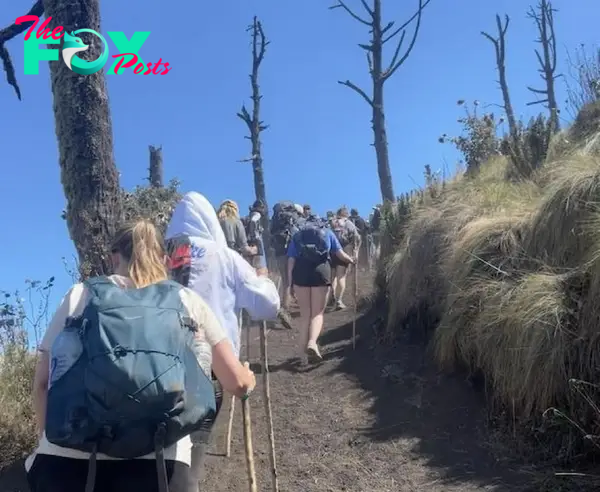
The hike itself is divided into several stages based on the changes in landscape along the way. As you ascend, you’ll pass through farmland, a cloud forest, an alpine forest, and volcanic terrain.
On average, the hike to camp can take anywhere from four to seven hours, and this is totally dependent on the fitness levels of the overall group, how often you stop for breaks, and how you adapt to the rapid increase in altitude.
My group made multiple short stops on the way up and a 30-minute lunch break. Our trek started just after 9.00 a.m., and we reached camp at around 2.30 p.m.
While the hike was relatively steep for most of the journey, it levelled out quite a bit towards the end, at which point I was relieved to have completed the most challenging parts first.
Your bag will definitely be heavier on the way up, as you’ll need to carry three or four litres of water, snacks, and winter gear for the evening. For 200 Quetzales (€24), you can hire a local porter to help you with your backpack, which makes the trip significantly easier.
PRO TIP: It’s also possible to hire a porter to help you with your bag on the descent, but your bag will be much lighter at this point.
Spending the Night at Camp
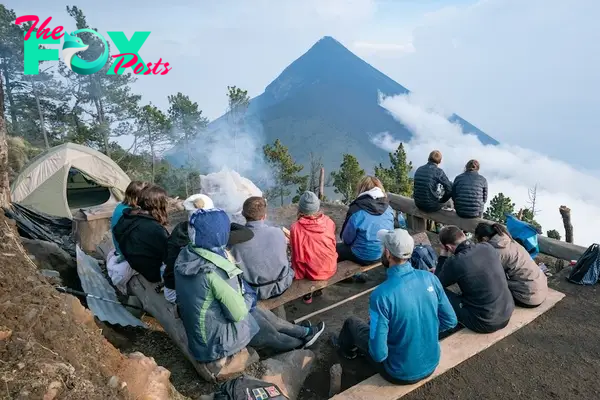
As we touched down at the campsite, which sits at an elevation of around 3400 metres, I was left speechless at how close we were to Fuego. While I’m sure most camps are strategically placed to offer stellar views, I’m not sure how much better it could get than our location!
There were five or six cabins onsite, along with two (very rustic) bathrooms, a small kitchen area, a viewing platform, and a fire pit for when the night rolled. As the night rolled in, the temperatures dropped considerably, and I was incredibly grateful for all those extra layers I’d packed.

Most of us spent the evening watching Fuego erupt as the sun began to set. For me, this time spent unwinding at the camp was the standout moment of the experience, and it made the arduous hike up worth every step.
I headed to bed around 10 p.m. and found the wooden cabins we were sleeping in surprisingly toasty, though this could be because it was shared between six of us!
At around 7.00 p.m., our much-anticipated dinner was served, which consisted of a generous serving of pasta with a hearty tomato sauce accompanied by a tasty glass of homemade wine. This was followed by a few hours of roasting marshmallows by the fire and marvelling at the vibrant lava flows spewing out from the crater every few minutes.
Optional Add-on Activities
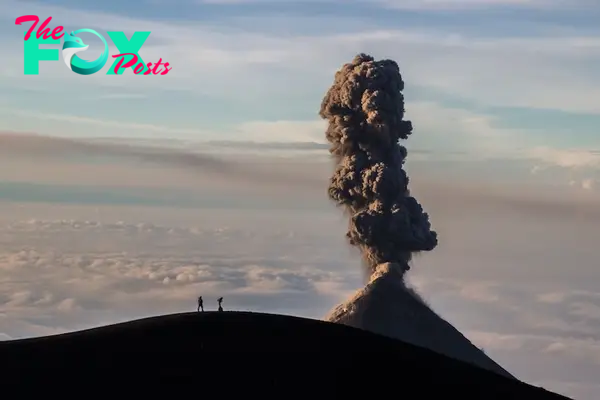
If you’re seeking a more thrilling experience and are feeling ambitious, you’ll have the option of completing additional hikes as part of your excursion.
After the initial hike to base camp, a handful of my fellow Travellers set off to climb to the ridge of Fuego for sunset, which took up most of the evening. I opted to abstain from this activity, but having spoken to those who made the hike to Fuego, it seems like an otherworldly adventure.
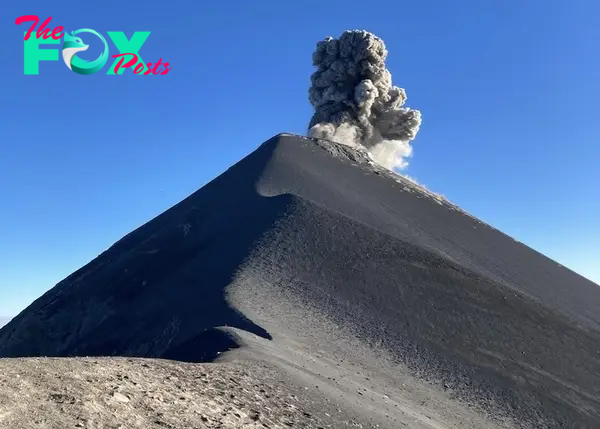
Although most find it more testing than the trek to camp, you’ll have the opportunity to watch the surreal eruptions from as close as possible, which is pretty spectacular. Because of the nature of this hike, you’ll need to pay an additional fee of 310 Quetzales (€37).
The following morning, you’ll get an early wake-up call for the final push to the summit to catch the sunrise. This climb takes around 90 minutes and is no easy feat, though you’ll quickly forget about the demanding climb as you watch the sky light up in stunning shades of pink and orange.
PRO TIP: You won’t need to pay for the Fuego hike until you return to Antigua, meaning you can decide to add on this activity when you arrive at camp rather than in advance.
Getting Back to Antigua

When the sun had come up, my group returned to camp for breakfast to fuel up before the journey back to Antigua.
Naturally, the descent was noticeably less draining than the walk up, but the slippery and dusty terrain meant it wasn’t without its challenges. At this point, I was heavily relying on the hiking poles I’d rented. Almost everyone in our group, including the most seasoned hikers, took at least a few tumbles on the way down!
The journey down took just under three hours, and we made it back to the trailhead accomplished, wiped out, and covered from head to toe in volcanic dust. Luckily, there were cold beers for sale at the bottom, which certainly perked everyone up ahead of the drive back to Antigua.
If things go as planned, you’ll return to the city around noon.

-

 Travel2d ago
Travel2d agoThese 11 Destinations Are So Stunning, They Don't Seem Real
-

 Travel4d ago
Travel4d agoAn Insiders’ Guide to Boston's Chinatown — Where to Eat and Drink
-

 Travel1w ago
Travel1w ago9 Best Places to Live in Ohio, According to Local Real Estate Experts
-

 Travel1w ago
Travel1w ago28 Hidden Wonders of the World
-

 Travel1w ago
Travel1w agoYou’ll Soon Be Able to Stay The Night in a Nakagin Capsule
-
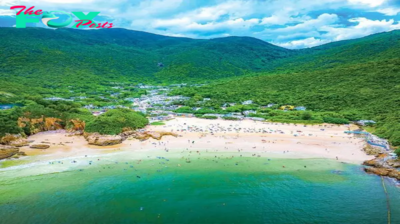
 Travel1w ago
Travel1w ago9 Beaches in Hong Kong With the Most Stunning Views
-

 Travel1w ago
Travel1w agoThis New Airline Caters to Jet-Setting Pups
-

 Travel1w ago
Travel1w ago9 Best Places to Live in Portugal, According to Local Real Estate Experts


